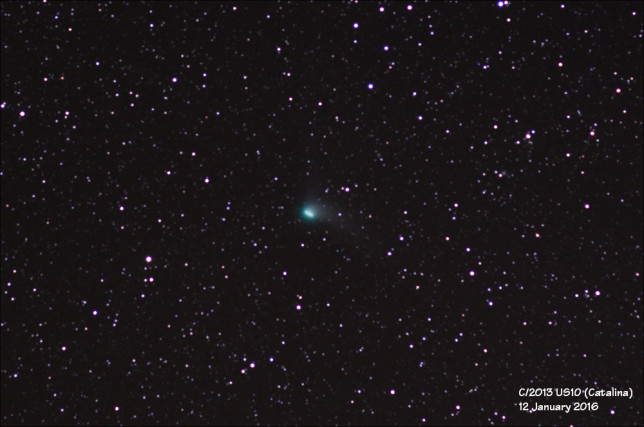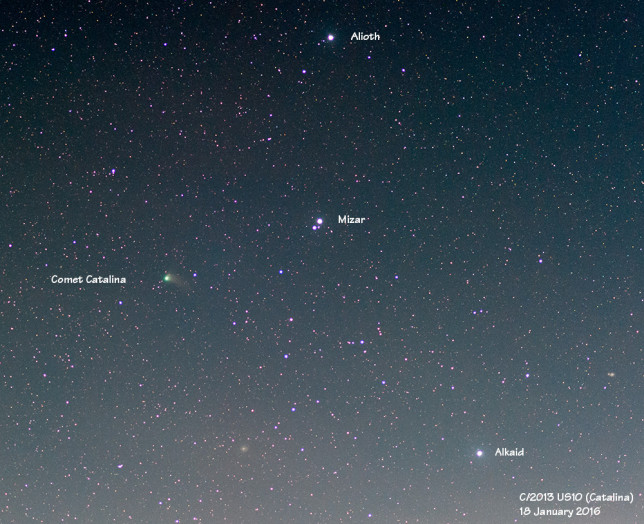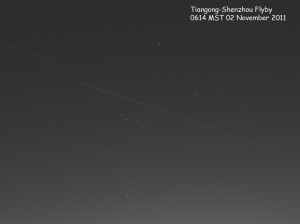Over the past few years I’ve been interested in capturing images of comets as they move through the inner solar system. Some have been easier than others primarily because of their brightness but also because of where they lie in the sky.
- Comet Lovejoy and the Pleiades
- Comet ISON in the morning sky
- Comet PanSTARRS—VIII
- Comet PanSTARRS—VI
- Comet PanSTARRS—II
- Comet Hale-Bopp
Comet Catalina (C/2013 US10), however, has been a challenge. When it first became visible in the northern hemisphere it was difficult to see in the early morning twilight. Later, it moved so that it was well up in the sky before twilight but then I was fighting both bright moonlight and cloudy weather.
Finally, clear skies have allowed me another chance to take images of the comet this week. It is quickly moving through the northern skies towards the constellation Ursa Major and made its closest approach to Earth (at a very safe distance of 110 million km) last night (17 January 2016).
The comet isn’t bright enough to be visible to the unaided eye but binoculars are sufficient to reveal it as a fuzzy spot in the sky. With a DSLR and long exposure it’s possible to get reasonable images.



The first set of images are from 12 January 2016. The comet is approaching the handle of the Big Dipper. One long-exposure image shows points of light for stars but a short streak for the comet as it moves through the sky.

The second set of images are from 18 January 2016. Occasional clouds and a quarter moon made it more challenging to get a great image but there will be more opportunities later this month.



